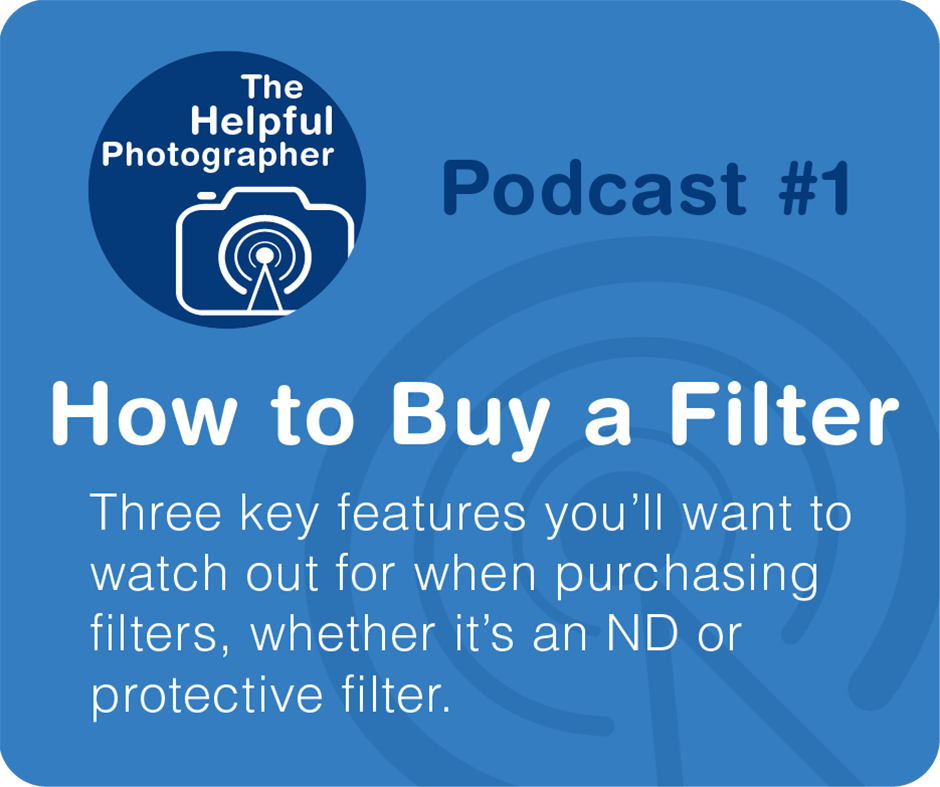How to Buy a Filter - UV, Clear & ND - Photo Tips
Photo Tips Podcast - How to Buy a Filter

The debate over the use of a protective filter is rank within the photographic community. Half say you need them, the other half say they’re an abomination. The half that says you need them argue that you need to protect your expensive lenses against scratches. The other half says that they are inferior and you’ll degrade the sharpness of your expensive lenses. The bottom line is if you baby your equipment, you probably don’t need a protective filter. However if you are hard on your gear it’s probably a good idea to have one. It should be noted that not all filters are created equal and there are definitely higher end filters and lower end filters which may make your images less sharp. So when buying a filter make sure you are getting the best quality filter possible, if you are shooting high end lenses. You should know that many of the high end filters are prone to knock offs! Yes, just like luxury hand bags, there are cheap imitations and you won’t know until you use them. When you buy a high end filter make sure you are buying from an authorized dealer. Often high end filters sold on Amazon are often cheap knock offs. I know because I own a couple.
When we are talking about a protective filters people normally buy UV or clear filters. I read on a website that you shouldn’t buy UV filters because our sensors already have UV and somehow a UV filter might interact strangely with our sensors and downgrade our images. I called B&W – the filter manufacturer and spoke to one of their engineers who told me that this was absolutely not true. But he also acknowledged that since sensors have UV built in it was not necessary to buy a UV filter and that clear was fine. By the way, I also spoke to Canon and they confirmed the same information.
When you are buying a filter do you’ll want to look for three key features, scratch resistance, shatterproof and nano technology. I think scratch resistance and shatter proof features are obvious, but what’s nano technology? This is the technology that makes things waterproof. By incorporating nano technology into filters, it means that they are also resistant to finger prints and if you do get your filter dirty you will be able to clean it easily. And filters always get dirty.
When you buy expensive ND filters, I would definitely encourage you to seek filters with all three of these features. I would like to believe that for $150-225 for a single sheet of glass that the manufacturer would incorporate these features into their filters.
One feature which I personally don’t put a lot of stock into, but which seems to hold a lot of weight among bloggers is color neutrality. Although a neutral density filter is supposed to be neutral, they usually aren’t. The manufacturing process doesn’t seem to lend itself to a completely color neutral filter. But fundamentally the color seems only to be shifting about 5-8 points or less in most filters. So I’m not sure why this is a problem. This much color can be corrected out easily with auto white balance, or custom white balance. And if you are shooting raw you can certainly correct that out without blinking. For me color neutrality is not a selling point and I certainly wouldn’t spend more money for it.
Aside from these features I think the most important feature to go after is sharpness. At this time there are no plastic filters that provide the same level of sharpness as glass filters and they are highly prone to scratching. There are lots of websites out there with sharpness comparisons so you can make your own decision on which is best for you.
That’s it for today. Until next time, keep on shooting.











